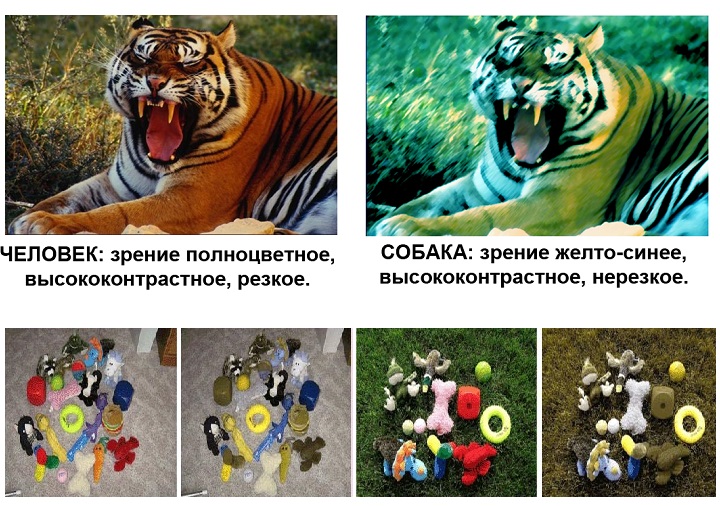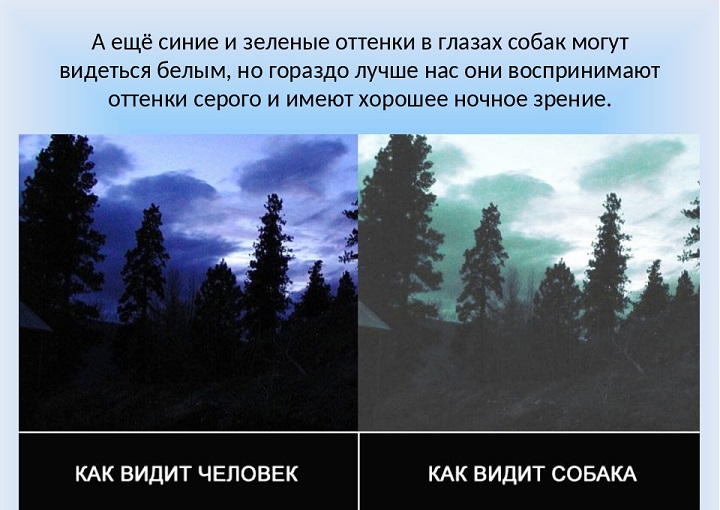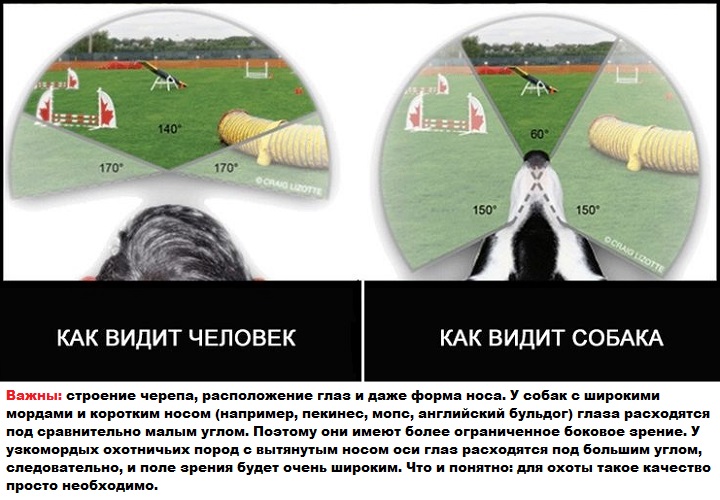In this article, we will consider whether dogs of color distinguish, what shades and how they see them.
Contents
- Do dogs of color distinguish or do they see the world in a black and white spectrum?
- And everyone distinguishes the dogs of color or what shades they see: photos of examples
- Do dogs of color distinguish equally at night and daytime, or as the dog sees?
- Do dogs distinguish color: interesting facts about the vision of pets
- Video: Do \u200b\u200bdogs distinguish color?
The visual system is quite complicated and at the same time interesting. And if the human perception of the world and flowers is clear to us, then the visual susceptibility of pets is fraught with many mysteries, myths, guesses and inventions. Therefore, we want to make out the question of whether dogs of color distinguish, as they see the world around us and us, including.
Do dogs of color distinguish or do they see the world in a black and white spectrum?
Previously, even a schoolboy to the question, “whether dogs of color are distinguished” knew the answer - and he was negative! Not so long ago, American scientists have found that Dogs see and even distinguish colors, but not all spectra.To understand what their visual perception is, we will draw an analogy with the human eye.
On the retina we have 3 types of cones that are responsible for color perception:
- the first L-type reacts to bright orange-red shades, capturing long-wave rays;
- middle M-type makes it possible to see a spectrum from green to yellow;
- the short-wave S-spectrum perceives the purple-blue range.

Important: dogs do not have the first L-type of cones and the whole spectrum is shifted in the direction of ultraviolet radiation, so red shades and bright colors are not available to them! But they perceive other colors of M and S of types. In addition, the number of sticks responsible for gray shades prevail in dogs. It is noted that they distinguish up to 40 shades of gray.
And everyone distinguishes the dogs of color or what shades they see: photos of examples
If the question is, whether the dogs are distinguished, we received a positive answer, then there is no unequivocal information about the more accurate data that they see.
Interesting: so that it is clearer how the dog sees, their visual susceptibility can be compared with color blinds - their colors are replaced by other faded shades. And for example, in order to understand the scarcity of susceptible shades, the dog will see a rainbow in yellow-white colors.

The supposed color palette through the eyes of the dog:
- violet, depending on the intensity, the pet sees gray or blue;
- blue shades, since they are dull in itself, the animal sees in much the same way as a person. But they are calmer. There is also a version that the dogs of the dog see the same blue;
- but the blue and lavender color, scientists say, dogs see the same way;
- green is replaced by yellow or white depending on the saturation. They see dark shades more dull and grayish;
- red and orange are completely absent. They are replaced by dirty or light yellow.
Tip: For training, it makes no sense to take bright and red toys. The best option is blue or yellow attributes. Even more - in green grass, it will be more difficult for them to distinguish a red ball.

Do dogs of color distinguish equally at night and daytime, or as the dog sees?
The first thing you should pay attention to is the clarity of the pets below. And the matter is not at all due to whether the dogs are distinguished or not. Their eyes are not the main body for obtaining information. A much large role is played by scent and hearing! For clarity - through vision we get up to 90% of the information, and dogs - only 30%.
Do dogs distinguish color the same in night and daytime:
- In nighttime Dogs see us much better than 4 times better. Due to the larger number of sticks-they are responsible for gray shades and vision at night. In addition, they have more pupils, and behind the retina there is a reflective plate or Tapetum. Thanks to him, the light flux is reflected in the retina and makes objects in the darkness more distinguishable. And in the end, the effect of luminous eyes is obtained.
- In the daytime Vision in dogs also has advantages. Due to the dark pigment located in the lower part of the retina, a bright color is absorbed. Therefore, they can, without squinting, well see objects, both on the sunny and snowy day. A person from sunlight, especially against a white background, loses the perception of colors and the visibility of silhouettes in general, and sometimes “bunnies” or pain in the eyes may appear.

Do dogs distinguish color: interesting facts about the vision of pets
- Dogs have slight farsightedness. For this reason, they poorly see everything that is at a distance of 35-50 cm-everything will be slightly vague. But moving objects are focused much better. And all due to the lack of a "yellow spot" on the retina. It is noted that visual acuity in dogs is 3 times higher!
- Also, the absence of a "yellow spot" allows dogs It is better to determine the distance to a moving object. After all, focusing sticks are located near the optical axis.
Important: the dog will clearly see a runaway at a distance of about 400 m, after some reinforced training-up to 800-900 m, but the dog will not see a motionless person at a distance of 100 m. It will only be found by smell.

- Dogs have a wider viewing circle and peripheral vision is better developed. But here is a clear picture (in the center) already, when compared with the human review. This is provided for by the nature of predators - it is necessary to focus vision on the victim, which is ahead, but one cannot lose sight of moving objects on the sides.
- Guardian dogs do not distinguish between the colors at the traffic light - They just follow the crowd and remember over time the desired location of the “little man”. Those. They develop a reflex when they need to go (if people have gone) or stand still.
- If we talk about whether the dogs of color differ equally depending on the breed, then scientists put forward the version that their color spectrum may vary. There are also dog breeds that see it worse at night. A similar picture with hearing: in animals with standing ears, hearing is more sensitive, and with lowered ones - better than scent.
- And do not amuse yourself with the thought that your pet distinguishes bright balls and toys - he simply remembers the smell and captures the trajectory of their fall.







